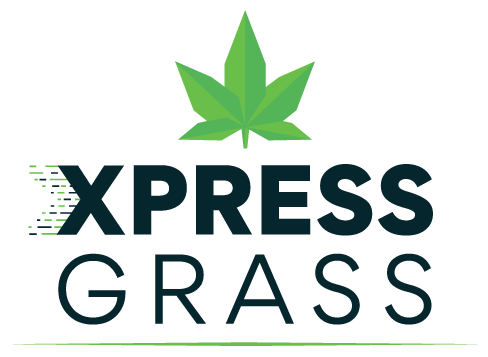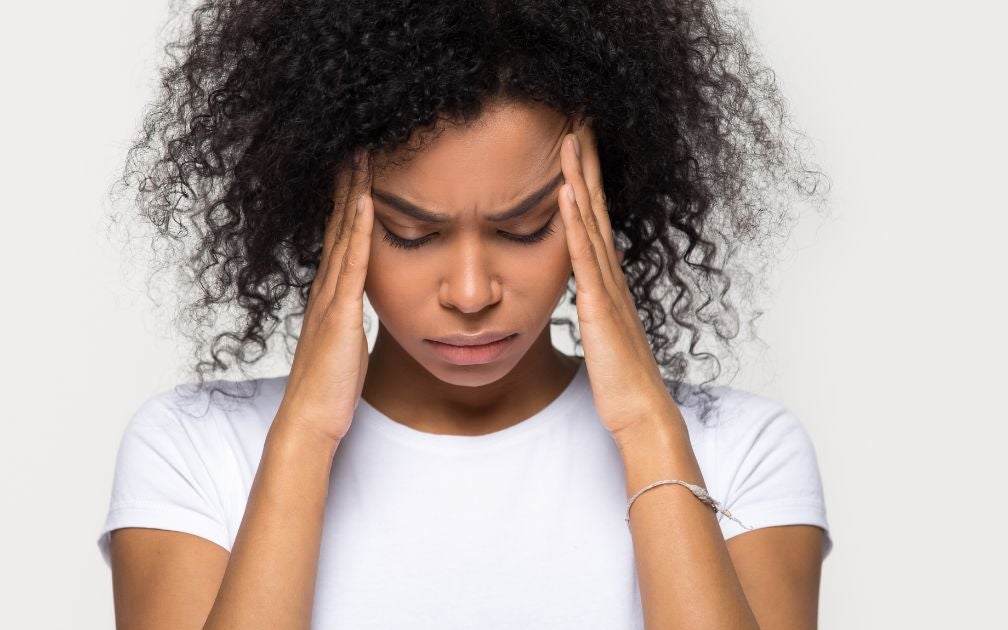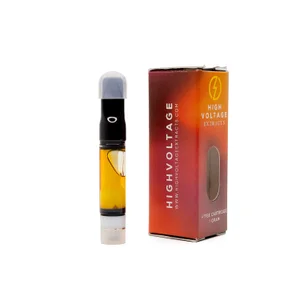Cannabis for Migraines: How This Natural Remedy Can Bring Relief
Table of Contents
- Understanding Migraines
- Current Treatment Options for Migraines
- Cannabis and Migraines
- Research on Cannabis for Migraines
- Risks and Considerations
- How to Use Cannabis for Migraines
- Personal Stories and Testimonials
- Conclusion
- Frequently Asked Questions
Migraines are an all-too-common and truly terrible experience, affecting countless individuals worldwide. If you’re seeking solace from the debilitating pain and searching for alternative treatments, cannabis may offer the relief you’ve been longing for. In this comprehensive guide, we explore the potential of cannabis for migraines, shedding light on its natural healing properties and sharing insights on strain selection, consumption methods, and expert advice.
Understanding Migraines
Migraines are a neurological disorder characterized by recurring headaches that typically occur on one side of the head. The pain is often pulsating and can last for hours or even days. In addition to the headache itself, individuals may experience other symptoms, such as nausea, vomiting, dizziness, and sensitivity to light and sound.
The exact cause of migraines is still not fully understood, but various factors have been identified as potential triggers. These triggers can vary from person to person and may include stress, hormonal changes, certain foods, environmental factors, and even genetic predisposition.
There are different types of migraines, each with its own unique characteristics. The most common type is known as a migraine without aura, where individuals experience moderate to severe headaches without any warning signs. On the other hand, migraines with aura involve additional neurological symptoms, such as visual disturbances, tingling sensations, and speech difficulties, which typically occur before the onset of the headache.
Current Treatment Options for Migraines
Conventional treatment methods for migraines primarily focus on two aspects: prevention and symptom relief. Preventive medications, such as beta-blockers, antidepressants, and anti-seizure drugs, are often prescribed to reduce the frequency and severity of migraines. These medications aim to regulate brain chemicals and minimize the triggers that can lead to migraine attacks.
In addition to preventive medications, there are also acute or symptomatic treatments available to alleviate the pain and other symptoms during a migraine attack. Over-the-counter pain relievers like ibuprofen or acetaminophen can be effective for mild migraines, while prescription medications such as triptans are commonly used for more severe cases.
However, conventional treatments for migraines have their limitations and potential side effects. Preventive medications may take weeks or even months to show noticeable effects, and they may not work for everyone. Acute medications can also have side effects, including drowsiness, dizziness, and rebound headaches. Moreover, some individuals may not respond well to these treatments or may prefer to explore alternative options.
Cannabis and Migraines
One alternative treatment that has gained attention in recent years is the use of cannabis for migraines. Cannabis, also known as marijuana, contains active compounds called cannabinoids, which interact with the body’s endocannabinoid system. This system plays a role in regulating various physiological processes, including pain perception, leading to the conclusion that marijuana might be one under-the-counter remedy for migraine relief.
Research suggests that cannabis may have potential therapeutic effects for migraines. The cannabinoids found in cannabis, particularly tetrahydrocannabinol (THC) and cannabidiol (CBD), have been shown to possess analgesic and anti-inflammatory properties. These properties could potentially help alleviate the pain and inflammation associated with migraines.
Furthermore, cannabinoids may also impact other migraine symptoms. For instance, CBD has been studied for its potential to reduce nausea and vomiting, common symptoms experienced during migraines. By targeting multiple symptoms simultaneously, cannabis-based treatments may offer a more comprehensive approach to migraine management.
It’s important to note that the research on cannabis for migraines is still limited, and more studies are needed to fully understand its effectiveness, optimal dosage, and potential long-term effects. Additionally, the legal status of cannabis varies across different regions, which may impact its accessibility for migraine sufferers.
Research on Cannabis for Migraines
Review of recent scientific studies investigating the effects of cannabis on migraines
In recent years, there has been growing interest in exploring the potential benefits of cannabis for migraine relief. Several scientific studies have delved into this topic, aiming to shed light on the effectiveness and mechanisms of action of cannabis in alleviating migraines.
One study published in the Journal of Pain in 2019 examined the effects of inhaled cannabis on migraine frequency, severity, and acute pain. The researchers found that using cannabis resulted in a significant reduction in the number of migraines experienced per month. Moreover, the severity of the migraines was also notably reduced. Participants reported a decrease in pain intensity and an improved ability to function during migraine attacks. These findings suggest that cannabis may indeed offer relief for migraine sufferers.
Another study investigated the effects of a combination of THC and CBD on chronic migraine and cluster headache. The researchers found that the cannabis treatment led to a significant reduction in the frequency of migraine attacks. Additionally, participants reported a decrease in the use of acute pain medications, indicating a potential role for cannabis in reducing reliance on conventional treatments.
Analysis of the findings, including the effectiveness of cannabis for migraine relief
Upon analyzing the findings of these studies and others, it becomes evident that cannabis has the potential to be an effective tool in the management of migraines. The cannabinoids present in cannabis, such as THC and CBD, interact with the body’s endocannabinoid system, which plays a crucial role in pain modulation.
The analgesic properties of cannabinoids have been well-documented, and they have been shown to have anti-inflammatory effects as well. These mechanisms can be particularly beneficial for individuals experiencing migraines, as inflammation and pain are prominent features of this condition.
Furthermore, the ability of cannabis to potentially reduce the frequency and severity of migraines can significantly improve the quality of life for those affected. Migraine sufferers often experience a decrease in productivity and an increased level of disability during attacks. By providing relief and reducing the impact of migraines, cannabis-based treatments can help individuals regain control over their lives and minimize the disruption caused by this neurological disorder.
Discussion of the potential mechanisms of action of cannabis in alleviating migraines
The exact mechanisms through which cannabis exerts its effects on migraines are not yet fully understood. However, several theories have been proposed based on the available research.
One possible mechanism involves the interaction of cannabinoids with pain receptors in the brain. The endocannabinoid system, which is influenced by the cannabinoids in cannabis, is known to regulate pain perception. By binding to specific receptors, cannabinoids may modulate the transmission of pain signals, resulting in a reduction in migraine-related pain.
Moreover, cannabinoids have been shown to possess vasodilatory properties, meaning they can widen blood vessels. In certain types of migraines, constriction of blood vessels is believed to play a role in the development of headaches. By dilating blood vessels, cannabinoids may counteract this constriction and potentially alleviate migraine symptoms.
Additionally, cannabinoids have been found to possess anti-inflammatory effects. Inflammation is thought to contribute to the pain and other symptoms experienced during migraines. By reducing inflammation, cannabinoids may help mitigate the severity and duration of migraines.
Risks and Considerations
Examination of the potential risks and side effects of cannabis use for migraines
While cannabis shows promise as a potential treatment for migraines, it’s crucial to consider the potential risks and side effects associated with its use.
One of the primary concerns is the psychoactive effects of THC, which is the compound responsible for the “high” commonly associated with cannabis use. These psychoactive effects can impair cognitive function and may not be desirable for individuals who prefer to remain clear-headed and functional while managing their migraines. It’s important for individuals considering cannabis as a treatment option to carefully evaluate their personal preferences and responsibilities to determine if the potential psychoactive effects align with their needs.
Additionally, cannabis use can have other side effects, such as dry mouth, dizziness, fatigue, and changes in appetite. These side effects vary among individuals, and some may find them manageable or insignificant compared to the benefits of migraine relief. However, it’s essential to be aware of these potential effects and monitor their impact on overall well-being.
Discussion of legal considerations and the current regulatory landscape
The legal status of cannabis varies across different regions, which has implications for its use as a treatment option for migraines. In some countries and states, cannabis for medical purposes is legal and accessible under specific regulations. These regulations may include requirements for obtaining a medical prescription, qualifying conditions, and restrictions on the types and quantities of cannabis products available.
However, it’s crucial to note that in many regions, cannabis remains illegal for both medical and recreational use. This poses challenges for individuals seeking cannabis-based treatments for migraines. It’s essential to understand and abide by the laws and regulations governing cannabis use in your specific jurisdiction to avoid legal consequences.
Furthermore, even in regions where cannabis is legal for medical use, healthcare professionals may have varying perspectives on its efficacy and safety for migraine treatment. It’s advisable to consult with a healthcare provider experienced in cannabis therapeutics or a specialist in migraine management to receive personalized guidance and recommendations.
It’s worth noting that the regulatory landscape surrounding cannabis is continuously evolving. As more research emerges and public opinion shifts, laws and regulations may change to reflect new findings and perspectives. Staying informed about the current legal status and ongoing developments in the field can help individuals make informed decisions about incorporating cannabis into their migraine management strategies.
How to Use Cannabis for Migraines
Guide on responsible cannabis use for migraine relief
If you are considering using cannabis as a potential treatment for migraines, it’s important to approach its use responsibly and with careful consideration. Here is a guide to help you navigate the world of cannabis for migraine relief:
- Consult with a healthcare professional: Before incorporating cannabis into your migraine management strategy, it’s crucial to consult with a healthcare professional who is knowledgeable about cannabis therapeutics and migraine treatment. They can provide personalized guidance based on your specific needs and medical history.
- Understand the different cannabinoids: Cannabis contains various cannabinoids, including THC and CBD, which have different effects. THC is psychoactive and produces the “high” associated with cannabis, while CBD is non-intoxicating and may have anti-inflammatory and analgesic properties. Understanding these differences can help you select the most suitable strains and products for your needs.
- Choose the right strain: Different strains of cannabis have varying compositions of cannabinoids and terpenes, which contribute to their unique effects. Some strains may be more effective for migraines due to their specific cannabinoid and terpene profiles. Experimenting with different strains and observing their effects can help you find the most beneficial option for your migraines.
- Consider different consumption methods: Cannabis can be consumed in various ways, each with its own pros and cons. Inhalation methods, such as smoking or vaporizing, provide rapid relief but may not be suitable for individuals with respiratory issues. Edibles offer longer-lasting effects but have a delayed onset and can be difficult to dose accurately. Topical applications, such as creams or balms, provide localized relief but may not be as effective for migraines.
Explanation of different consumption methods and their pros and cons
- Inhalation methods: Smoking or vaporizing cannabis allows for quick absorption into the bloodstream, resulting in rapid onset of effects. This method is beneficial for individuals seeking immediate relief during a migraine attack. However, it may not be suitable for those with respiratory conditions or sensitivities.
- Edibles: Edibles, such as cannabis-infused foods or beverages, provide a longer-lasting effect compared to inhalation methods. They are discreet and convenient but can take longer to kick in, sometimes up to two hours. Dosing can be challenging, as the effects may vary depending on factors like metabolism and tolerance.
- Sublingual administration: This method involves placing cannabis extracts or tinctures under the tongue for absorption through the sublingual blood vessels. It offers faster onset compared to edibles and avoids potential lung irritation associated with inhalation. Dosage control is relatively easier, as the effects can be felt within 15-30 minutes.
- Topical applications: Cannabis-infused creams, lotions, or balms can be applied directly to the affected area for localized relief. While they may not provide immediate migraine relief, they can help with tension or inflammation-related headaches.
Dosage guidelines and considerations
Determining the right dosage of cannabis for migraines can be challenging, as it varies greatly among individuals. Factors such as tolerance, body weight, metabolism, and the specific strain and consumption method can influence the optimal dosage.
Start with a low dose and gradually increase it over time while closely monitoring the effects. Keeping a journal to record your dosage, strain, and the intensity of your migraines can help identify the most effective dosage for you. It’s important to note that finding the right dosage may require some trial and error.
Always follow the product’s instructions and guidelines provided by healthcare professionals. Additionally, it’s advisable to use products that have undergone third-party testing to ensure quality and accurate cannabinoid content.
Moreover, it’s essential to be aware of the potential interactions between cannabis and other medications you may be taking.
Consult with your healthcare professional or pharmacist to ensure there are no contraindications or potential drug interactions that could affect your safety and well-being.
It’s important to approach cannabis use for migraines responsibly and with moderation. Avoid excessive use and prioritize your overall health and well-being. Using cannabis as a complementary therapy alongside other migraine management techniques, such as stress reduction, adequate sleep, and a healthy lifestyle, can enhance its potential benefits.
Personal Stories and Testimonials
One of the most powerful ways to understand the impact of cannabis for migraines is through personal stories and testimonials from individuals who have firsthand experience. Here are a few anecdotes that highlight the potential benefits of cannabis for migraine relief:
- Sarah, a 35-year-old migraine sufferer, had tried various conventional treatments with limited success. She decided to explore cannabis as an alternative and found that using a specific strain significantly reduced the frequency and severity of her migraines. She noted that cannabis provided her with better pain management and improved her ability to function during attacks.
- John, a 42-year-old individual, experienced chronic migraines that significantly impacted his daily life. After careful research and consultation with a healthcare professional, he incorporated CBD oil into his migraine management routine. He reported that CBD helped reduce the intensity of his migraines and provided a sense of calm during stressful episodes.
These personal stories illustrate the potential positive effects of cannabis for migraine relief. However, it’s important to remember that individual experiences can vary, and what works for one person may not work for another. Personal anecdotes should not replace professional medical advice, and it’s crucial to make informed decisions in consultation with healthcare professionals.
Conclusion
In conclusion, cannabis holds exciting potential as a treatment option for migraines, showing promise in reducing frequency, severity, and acute pain. By responsibly exploring different consumption methods and adhering to individual dosage guidelines, individuals may find relief and improved quality of life. Personal stories provide glimpses into the positive impact of cannabis on migraines, but it’s crucial to consult with healthcare professionals and stay informed about legal considerations. As research continues to uncover the mysteries of cannabis for migraines, combining its use with other management techniques and prioritizing overall well-being can unlock a more comfortable future for those seeking relief from the burdens of migraines.
FAQs
What is the best herb for migraines?
While individual responses may vary, some herbs that have been traditionally used for migraines include feverfew, butterbur, and ginger. However, it’s important to consult with a healthcare professional before incorporating any herbs into your migraine management plan.
How much CBD does it take to get rid of a migraine?
The optimal CBD dosage for migraines can vary among individuals. It’s best to start with a low dose and gradually increase it until you find the level that provides relief. Working with a healthcare professional experienced in CBD therapeutics can help determine the appropriate dosage for your specific needs.
Is sativa or indica better for migraines?
The choice between sativa and indica strains depends on personal preference and individual response. Sativa strains are often associated with energizing effects, while indica strains are known for their relaxation and sedating properties. Experimenting with different strains and observing their effects can help determine which is more suitable for your migraines.
What kind of CBD is best for migraines?
Both full-spectrum CBD and CBD isolate can potentially offer relief for migraines. Full-spectrum CBD contains a range of cannabinoids, including THC, which may provide additional benefits through the entourage effect. CBD isolate, on the other hand, contains only pure CBD. The choice depends on individual preference, tolerance, and any legal considerations in your jurisdiction.
What are the best options for migraines?
The best options for migraines can vary among individuals. Some conventional treatments include over-the-counter pain relievers, triptans, and preventive medications. Additionally, non-pharmacological approaches such as lifestyle changes, stress management, and relaxation techniques can also be beneficial. It’s important to work with a healthcare professional to determine the best options for your specific situation and to explore potential complementary therapies like cannabis under their guidance.












